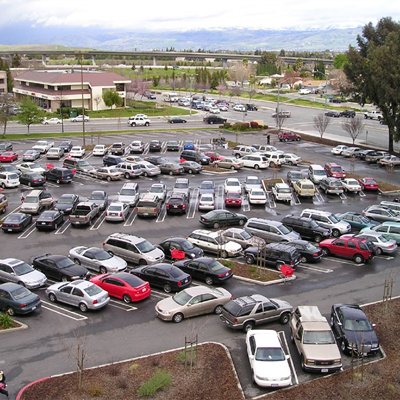American Market Trends: Hybrid vs. Electric Vehicles
Introduction
In recent times, the automotive landscape in the United States has undergone a significant transformation, with a growing emphasis on eco-conscious transportation solutions. This shift has given rise to the increasing popularity of both hybrid and electric vehicles, each offering unique benefits to American consumers. Here, we explore the prevailing trends and distinctions between these two vehicle types within the American market.
| Also Read: Hybrid Powertrains: Bridging the Gap to Full Electrification |
Hybrid Vehicles:
Hybrid auto vehicles in America have maintained a consistent presence in the American auto market for more than twenty years. These vehicles harmoniously blend traditional internal combustion engines, often powered by gasoline, with electric motors and batteries.
The allure of hybrids extends from their enhanced fuel efficiency, providing drivers with notable cost savings at the fuel pump. This appeal is particularly pertinent due to the unpredictable fluctuations in gasoline prices across the nation. Moreover, hybrids contribute to reduced emissions, aligning with the United States' ongoing commitment to mitigate its carbon footprint.
As hybrid auto vehicles in America continue to evolve, manufacturers are investing in cutting-edge technologies to further improve their performance and environmental impact. Regenerative braking systems, for example, allow hybrids to capture and store energy during braking, which can then be used to power the electric motor or recharge the battery. This innovation enhances overall efficiency and reduces wear on the braking system.
| Also Read: Autonomous Vehicles: Paving the Way for a Self-Driving Future |
One of the significant advantages of hybrids is their ability to seamlessly transition between gasoline and electric power. This feature addresses the concerns of range anxiety often associated with fully electric vehicles. Drivers of hybrid vehicles enjoy the flexibility of a gasoline engine for longer journeys while benefiting from electric power during stop-and-go traffic or lower-speed driving conditions.
Hybrid technology also finds its way into larger vehicles such as SUVs and trucks, catering to the diverse preferences of American consumers. The integration of hybrid systems in these vehicles not only improves fuel efficiency but also contributes to a more sustainable future by reducing emissions in segments known for their higher fuel consumption.
In conclusion, hybrid vehicles play a vital role in shaping the American automotive landscape, offering a pragmatic solution that bridges the gap between conventional gasoline engines and fully electric vehicles. As hybrid auto vehicles in America continue to advance, they provide an accessible and efficient option for consumers striving for both fuel savings and reduced environmental impact.
| Also Read : The Rise of Electric Vehicles (EVs) in Commercial Fleets: A Comprehensive Guide for B2B Decision-Makers |
Electric Vehicles (EVs):
Over recent years, electric vehicles (EVs) have garnered remarkable attention and adoption in the American market. Distinguishing themselves from hybrid auto vehicles in America, EVs rely solely on electric power, harnessed from large battery packs.
EVs have emerged as a transformative force in the pursuit of sustainable transportation. With zero tailpipe emissions, these vehicles play a pivotal role in reducing air pollution and mitigating the effects of climate change. This aligns with the United States' commitment to cleaner energy sources and a greener future.
One of the key drivers behind the surge in EV adoption is advancements in battery technology. These advancements have led to improved battery range and faster charging times, alleviating the "range anxiety" that previously concerned potential EV buyers. As charging infrastructure continues to expand across the country, EV owners can enjoy greater convenience and peace of mind when it comes to recharging their vehicles.
Government incentives and mandates also contribute to the growing popularity of EVs. In various states, rebates, tax credits, and other incentives are offered to incentivize consumers to make the switch to electric vehicles. Additionally, some states have set goals to phase out gasoline-powered vehicles entirely in the coming years, further propelling the adoption of EVs.
The attraction of electric vehicles (EVs) goes beyond their positive environmental impact. These cars are famed for their immediate torque, offering a swift and thrilling driving encounter. The serene and seamless performance of electric motors further contributes to the overall driving comfort of an EV.
| Also Read: Electrification Drive: Advancements and Challenges in Electric Vehicles |
Moreover, EV technology isn't limited to sedans and hatchbacks; automakers are increasingly introducing electric SUVs and trucks to cater to diverse consumer preferences. This expansion of EV options speaks to the broader scope of electric vehicles in reshaping the American automotive market.
In conclusion, electric vehicles have gained substantial momentum as a transformative and sustainable transportation solution in the American market. With technological advancements, increasing charging infrastructure, and supportive government policies, EVs are positioned to play a significant role in driving the nation toward a more eco-friendly and energy-efficient future.
Key Market Trends:
As both hybrid and electric vehicles vie for consumer interest, several trends have come to the forefront:
A) Infrastructure Advancements
The ongoing transformation of the American automotive landscape toward more sustainable options, including hybrid auto vehicles in America and electric vehicles (EVs), is accompanied by the critical need for infrastructure advancements. The development of charging and refueling networks is a central element shaping the adoption of both these vehicle types.
1. Charging Networks for Electric Vehicles (EVs): The proliferation of EVs has led to a heightened demand for reliable and accessible charging infrastructure. As the keyword "hybrid auto vehicles in America" suggests, the focus extends not only to fully electric vehicles but also to plug-in hybrids that require charging. EV charging stations are being installed in various locations, such as public parking lots, shopping centers, and even residential areas.
The concerted effort to expand the charging network aims to alleviate the concern of "range anxiety" that has often deterred potential EV buyers. As the range of EVs continues to increase with advancements in battery technology, the availability of convenient charging options becomes increasingly important. Moreover, the rise of fast-charging stations allows EV owners to quickly recharge their vehicles, making long trips more feasible.
| Also Read: Electrifying Your Fleet: Navigating the Rise of Electric and Hybrid Vehicles in Commercial Operations |
2. Refueling Infrastructure for Hybrid Vehicles: While EVs rely on charging stations, hybrid vehicles benefit from the established refueling infrastructure for gasoline-powered vehicles. This infrastructure advantage is particularly pertinent in the context of "hybrid auto vehicles in America." Hybrid drivers can enjoy the flexibility of refueling at traditional gas stations, mitigating concerns about charging availability.
Efforts to promote sustainable transportation go hand in hand with investments in charging and refueling infrastructure. Various stakeholders, including governments, utility companies, and private businesses, are collaborating to create an extensive network that caters to the needs of both hybrid and electric vehicles.
However, it's important to note that the growth of infrastructure is an ongoing process that requires consistent attention and investment. As more consumers transition to hybrid and electric vehicles, the expansion of charging and refueling networks remains a crucial element in realizing the full potential of these eco-friendly transportation options.
B) Range Considerations: When exploring the landscape of hybrid auto vehicles in America and electric vehicles (EVs), one critical factor that influences consumer choices is the range each vehicle type offers. The concept of range becomes a focal point in assessing the suitability of these vehicles for different driving needs and preferences.
1. Electric Vehicles (EVs) and Range Concerns: As highlighted by the term "hybrid auto vehicles in America," EVs rely entirely on electric propulsion, making their driving range a crucial factor to consider. The concept referred to as "range anxiety" denotes the apprehension of depleting battery charge prior to reaching a charging point. Effectively dealing with this issue has played a vital role in accelerating the acceptance of EVs.
Recent advancements in battery technology have significantly extended the driving ranges of EVs. Many modern EVs offer ranges that can comfortably cover the daily commuting needs of most Americans. Moreover, the expansion of charging infrastructure, as discussed earlier, has contributed to mitigating range anxiety. Fast-charging stations along major routes offer quick recharge options, making longer journeys more feasible for EV owners.
2. Hybrid Vehicles and Adaptability: In the realm of hybrid auto vehicles in America, the range consideration takes on a different dimension. Hybrids, unlike their fully electric counterparts, operate with both an internal combustion engine and an electric motor. This dual power source provides a unique advantage – the ability to seamlessly switch between gasoline and electric power, ensuring a broader and more adaptable driving range.
Hybrids, thanks to their gasoline engines, eliminate the need for constant charging or concern about running out of battery power. This feature addresses the limitations often associated with fully electric vehicles, making hybrids well-suited for drivers who frequently embark on longer journeys or have unpredictable driving patterns.
In essence, the evolution of both hybrid and electric vehicles has seen significant strides in extending their respective ranges, whether through improved battery technology for EVs or the adaptable dual-power approach of hybrids. These developments contribute to eradicating range anxiety, ensuring that consumers have practical and reliable options that align with their driving habits and needs.
As the automotive industry continues to innovate, the range of considerations of hybrid and electric vehicles will remain a pivotal aspect in shaping consumer perceptions and adoption rates. Striking a balance between electric power and adaptability will be key in catering to a diverse range of driving preferences within the American market.
C) Government Incentives:
Government Incentives for Hybrid and Electric Vehicles:
Within the domain of hybrid auto vehicles in America and electric vehicles (EVs), government incentives hold a pivotal position in driving the uptake of these environmentally conscious transportation alternatives. These incentives are designed to motivate consumers to adopt more sustainable vehicles while also contributing to overarching environmental objectives.
1. Promoting Electric Vehicle Adoption: The inclusion of "hybrid auto vehicles in America" as a keyword underscores the broad spectrum of interest, encompassing not just hybrids but also EVs. Both federal and state governments have put into effect a range of incentives to stimulate the adoption of EVs. These incentives often take the form of tax credits or rebates, effectively lowering the initial purchasing cost of an electric vehicle. The financial relief offered through these incentives can extend the accessibility of EVs to a more diverse consumer base.
Furthermore, some states offer additional perks such as access to carpool lanes, reduced registration fees, and free or discounted charging at public charging stations. These incentives not only reward current EV owners but also motivate potential buyers to make the switch to electric.
2. Supporting Hybrid Auto Vehicles: While the focus may lean towards EVs, government incentives also extend to hybrid vehicles. Incentives for hybrids can include tax credits or deductions based on the vehicle's fuel efficiency and emissions performance. These incentives acknowledge the role that hybrids play in reducing overall emissions and enhancing fuel economy.
Government policies that incentivize the adoption of eco-friendly vehicles align with the broader sustainability objectives of reducing carbon emissions and reliance on fossil fuels. By encouraging consumers to choose hybrid and electric options, governments are instrumental in driving the transition towards a greener and more energy-efficient transportation landscape.
It's worth highlighting that government incentives are subject to evolution over time, adapting to shifts in market conditions, technological progress, and environmental objectives. With the ongoing innovation and introduction of fresh vehicle models in the automotive industry, policymakers will probably reevaluate and modify these incentives to maintain their ongoing efficacy.
Conclusion
To sum up, the convergence of hybrid and electric vehicles within the American market offers a comprehensive strategy for sustainable transportation. As the automotive sector undergoes continuous transformation, the collaboration between these technologies has the capacity to notably curtail emissions and cultivate a driving culture that prioritizes environmental well-being. Through the adoption of hybrid auto vehicles in America and EVs, both consumers and governments play a role in advancing the hopeful path toward a cleaner and more ecologically balanced future for upcoming generations.


